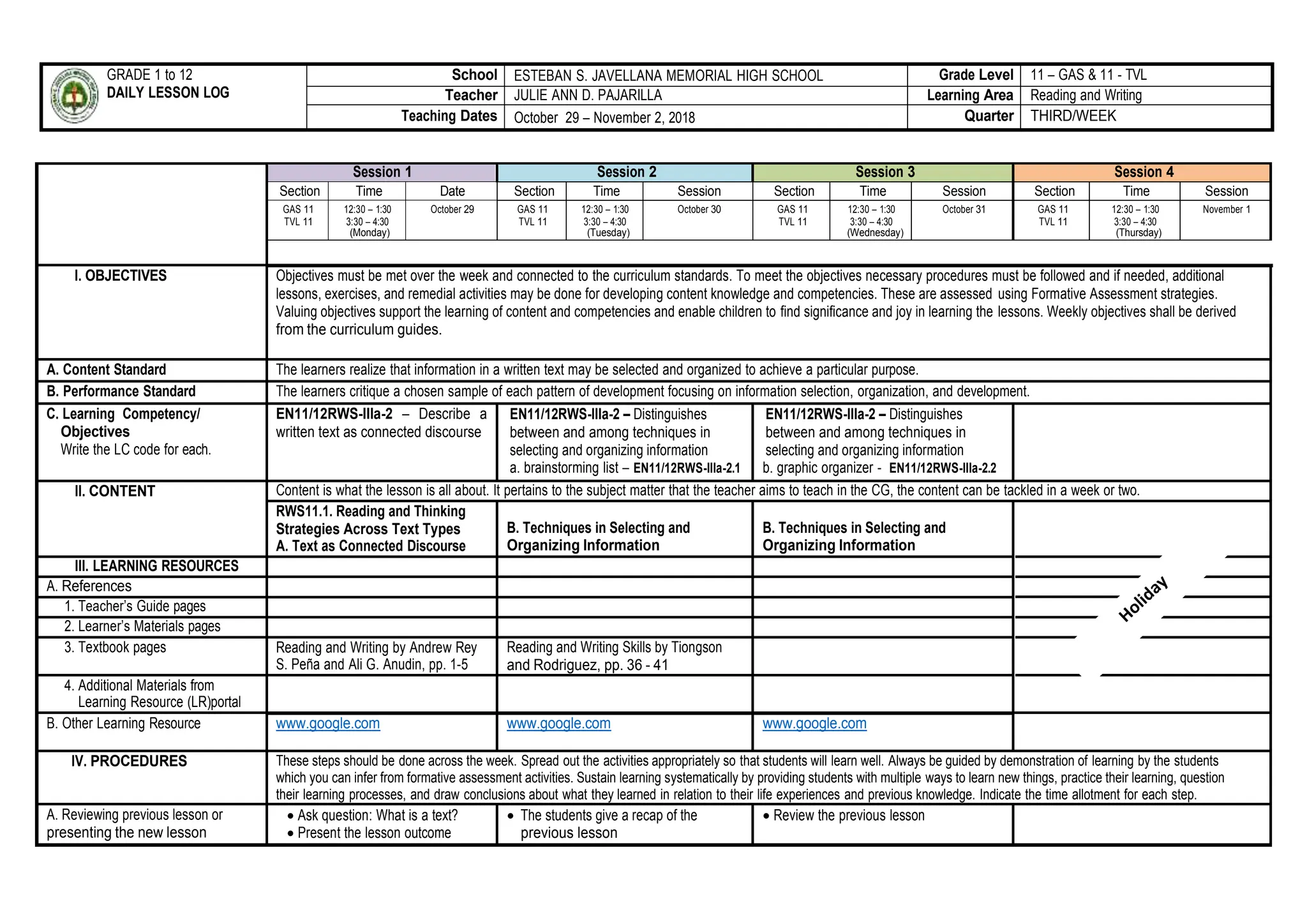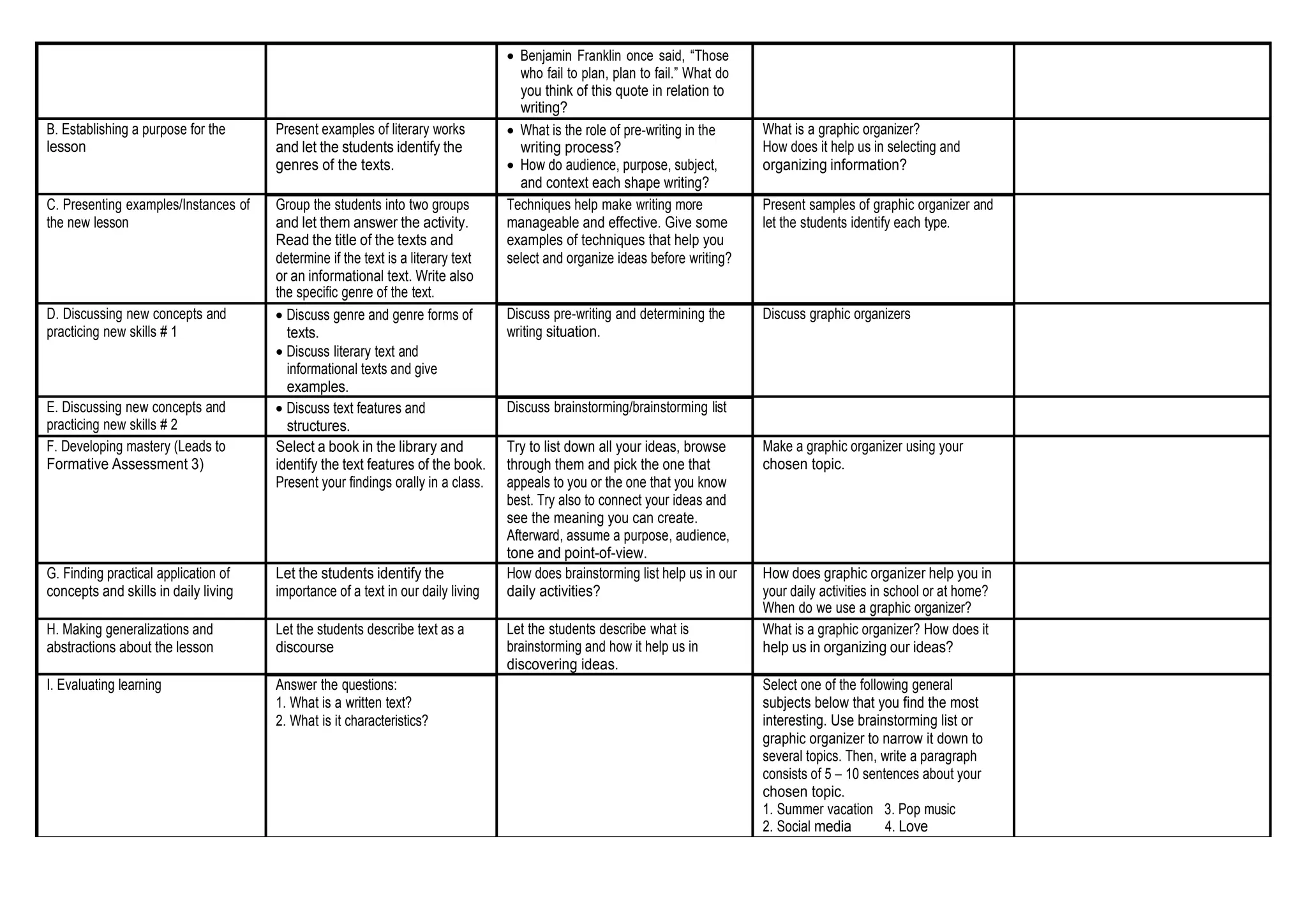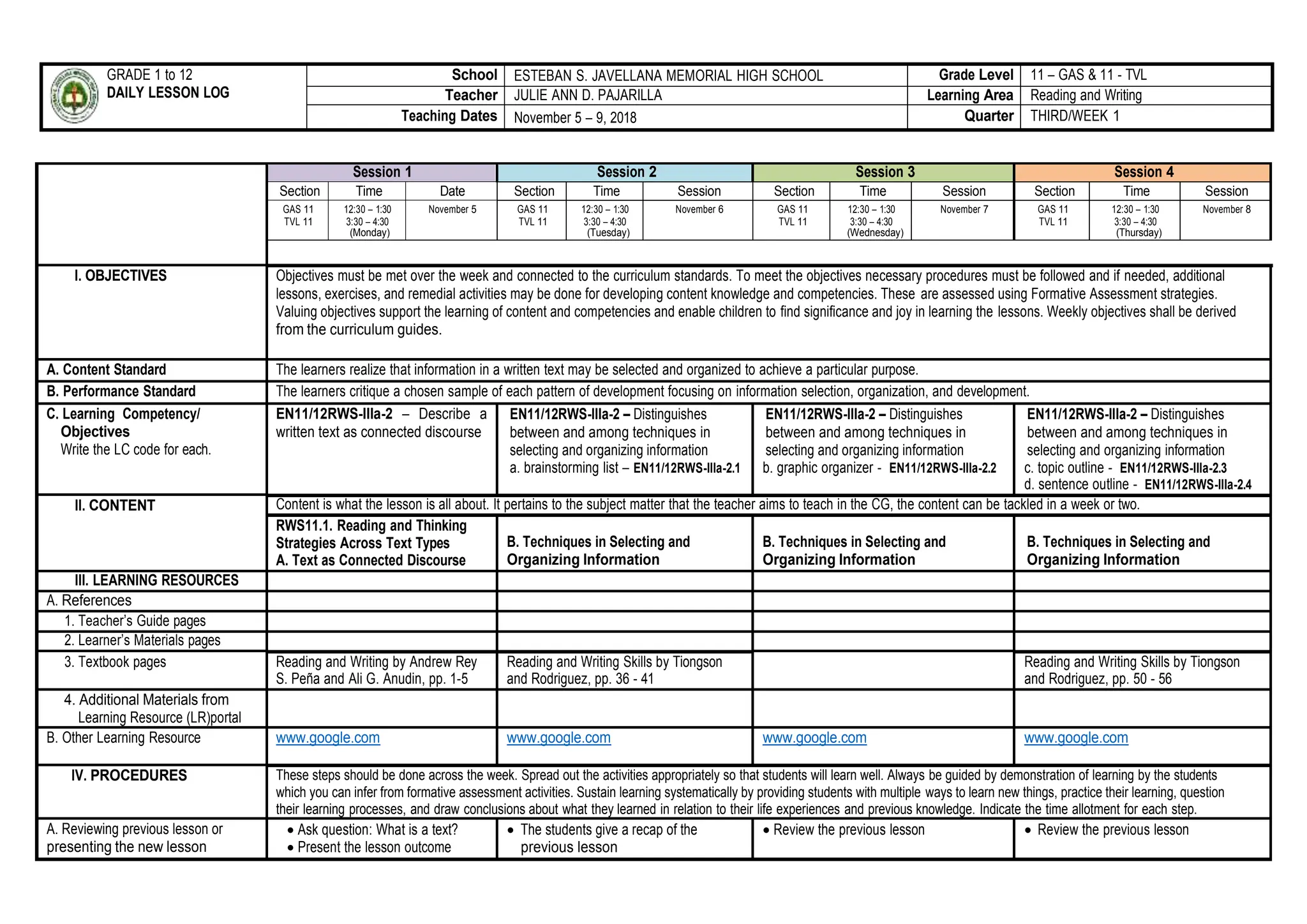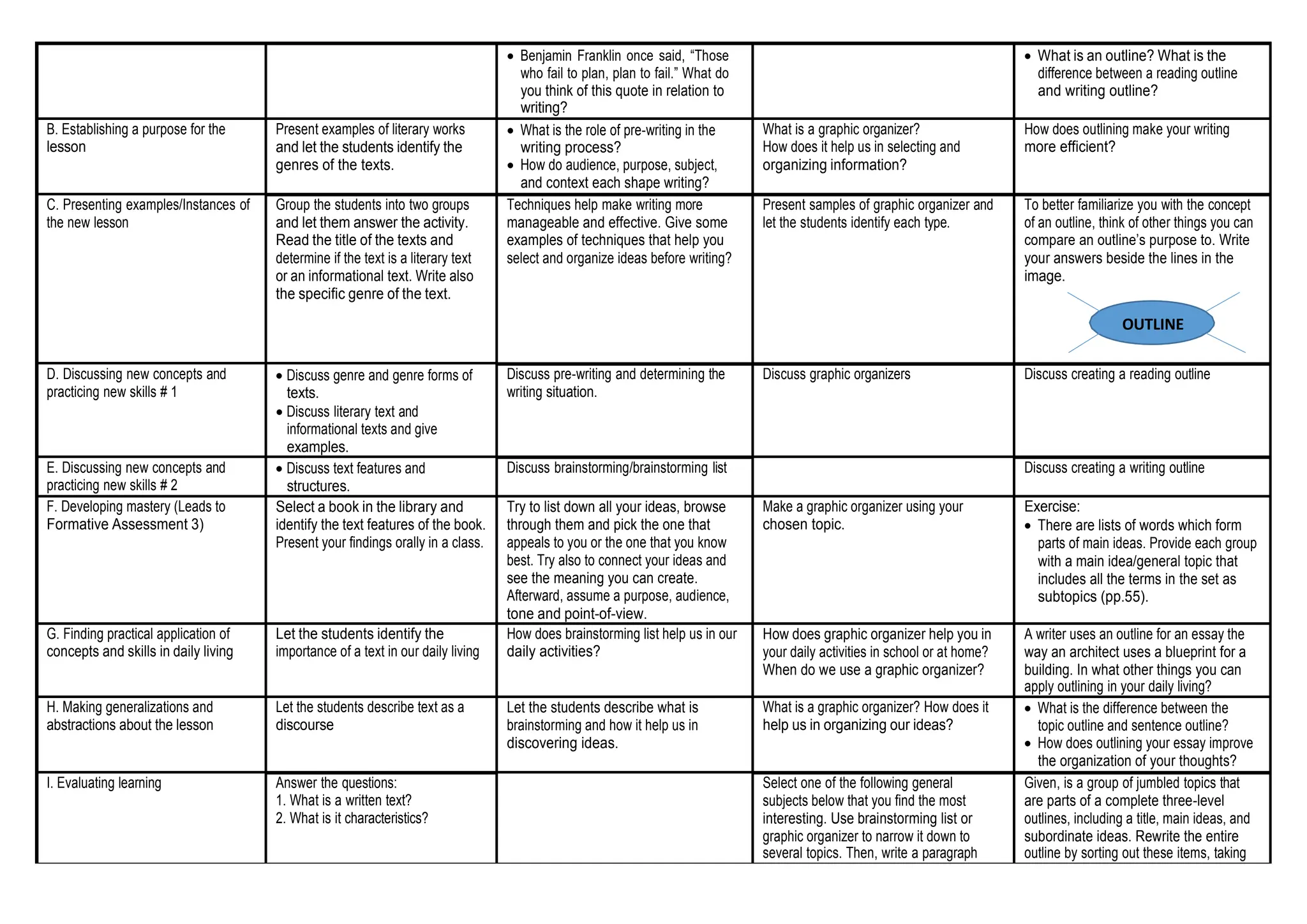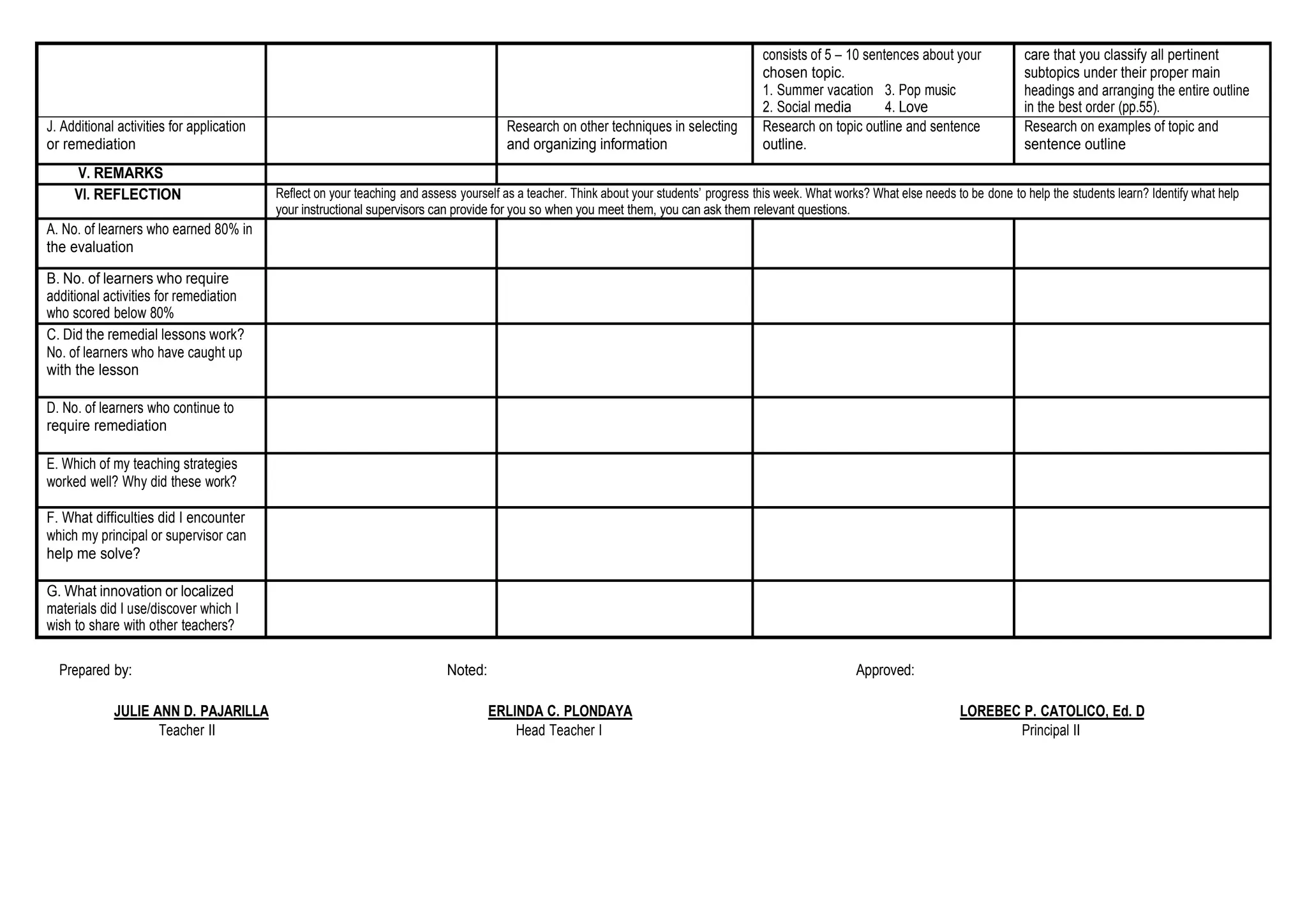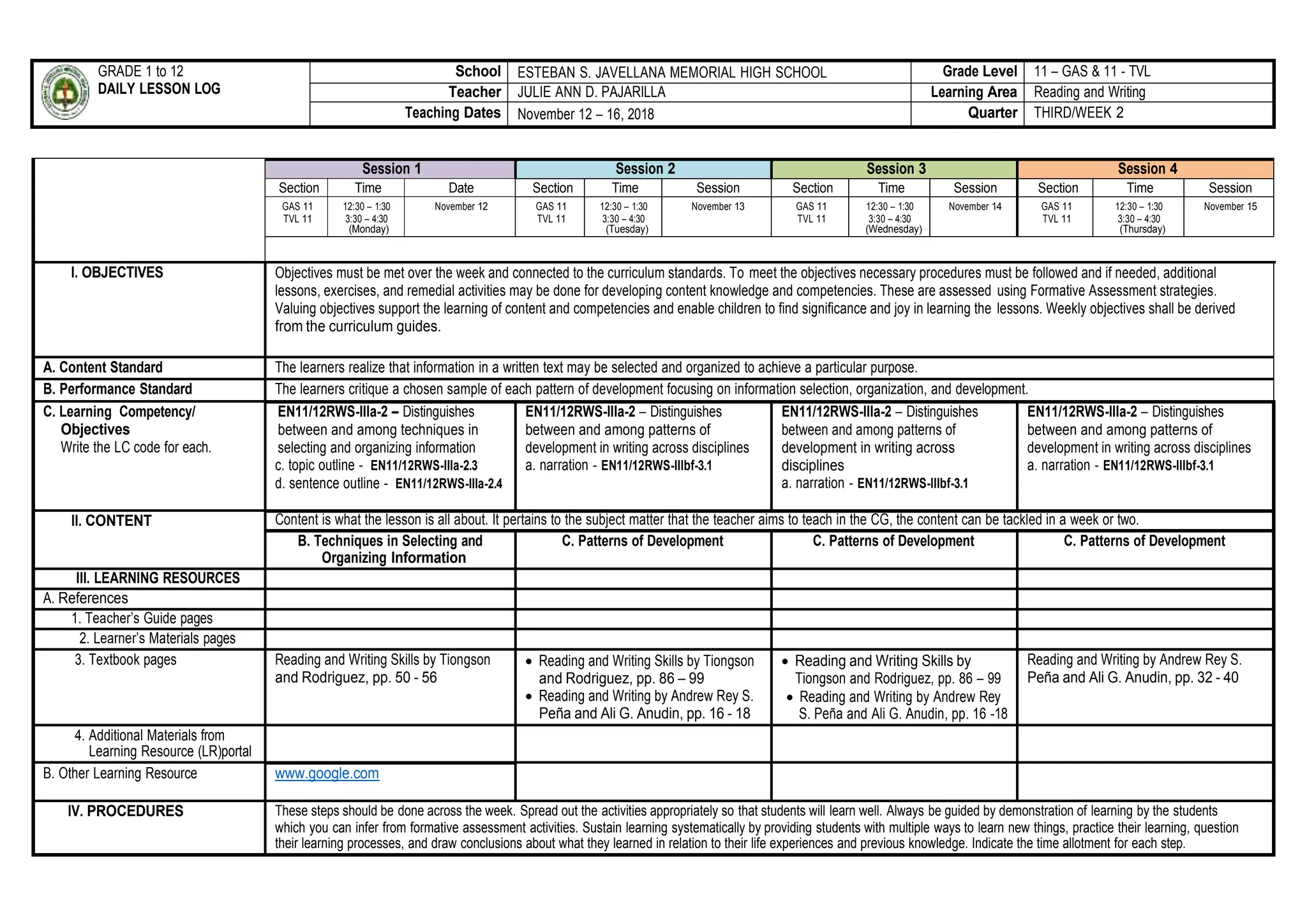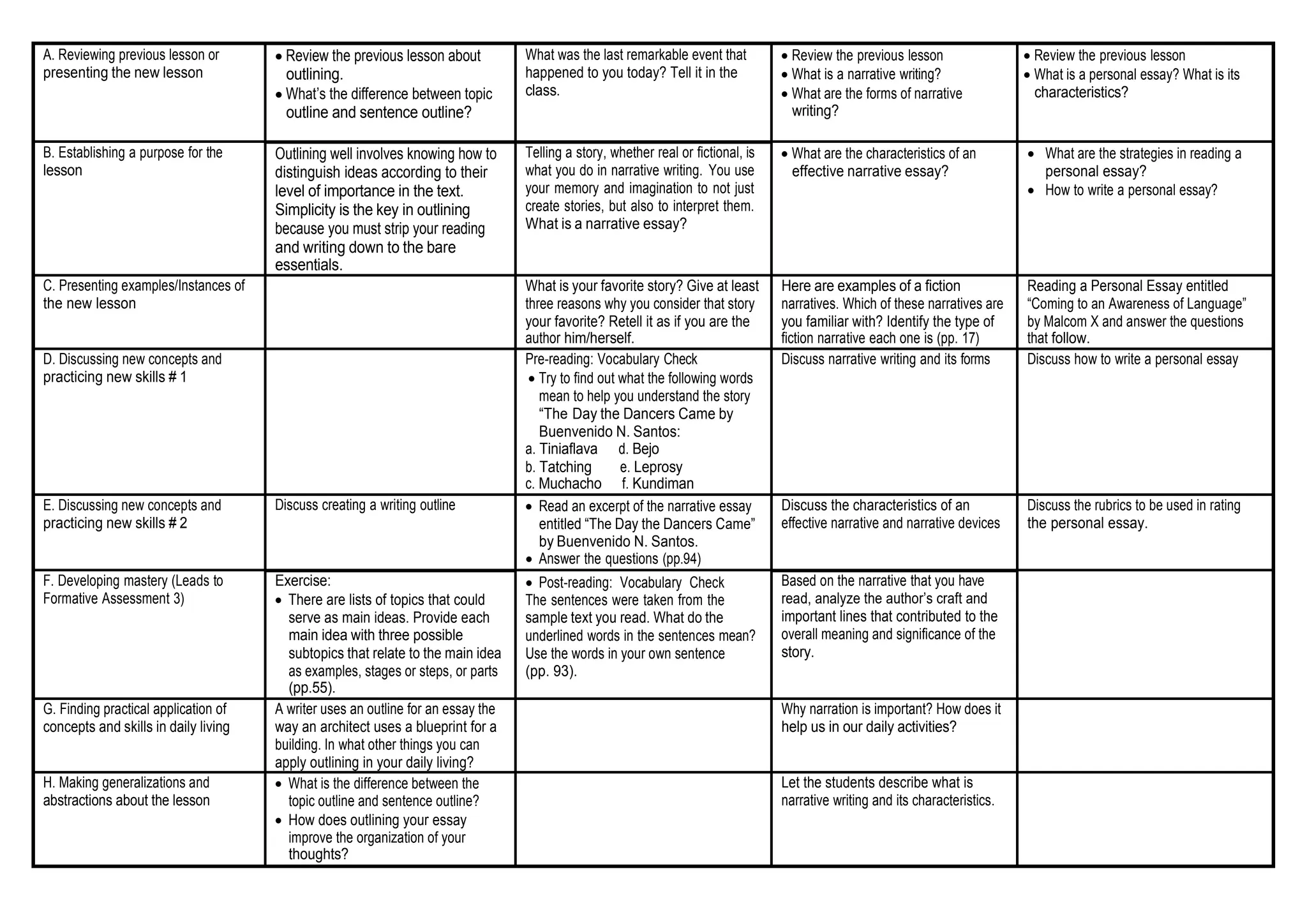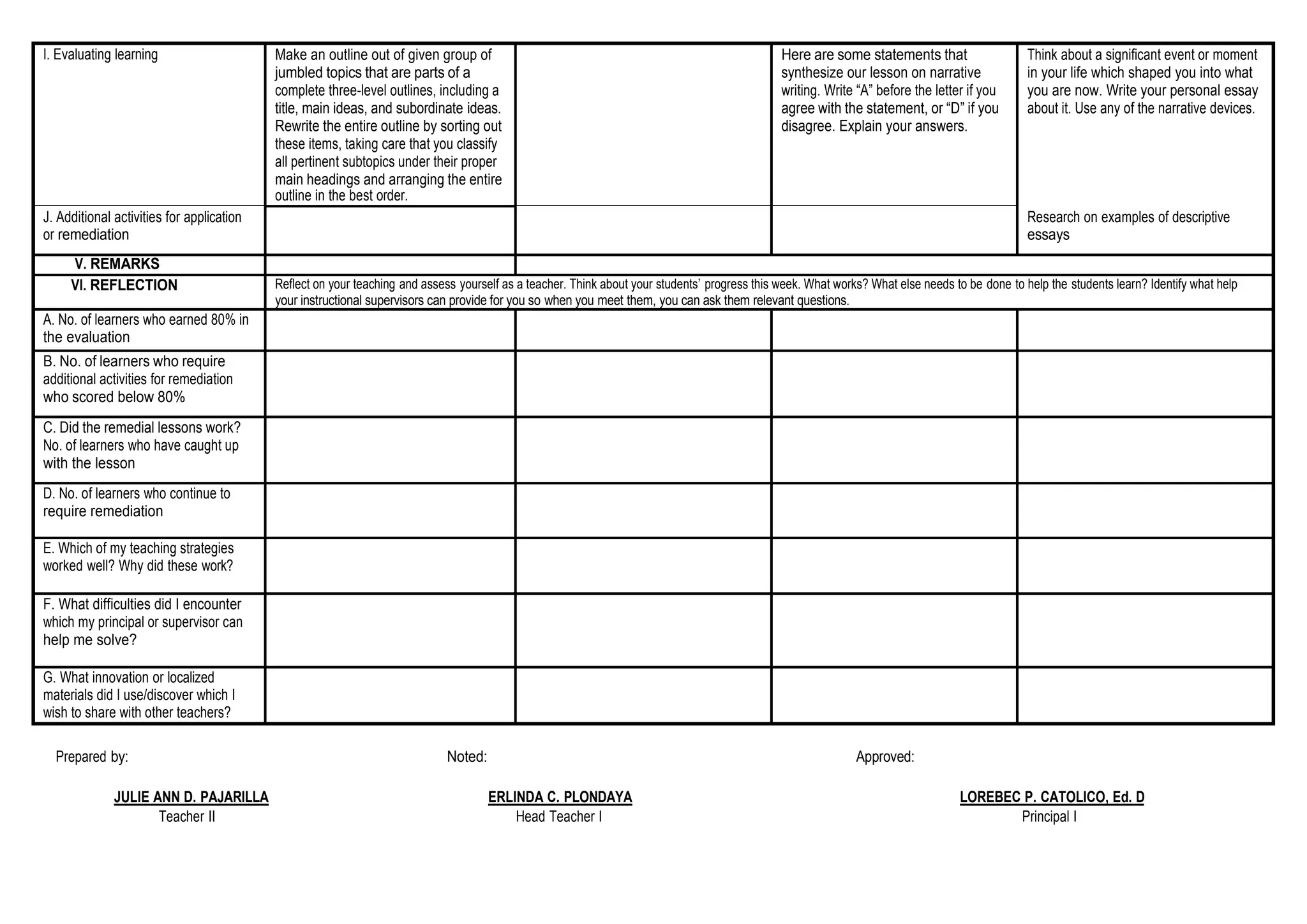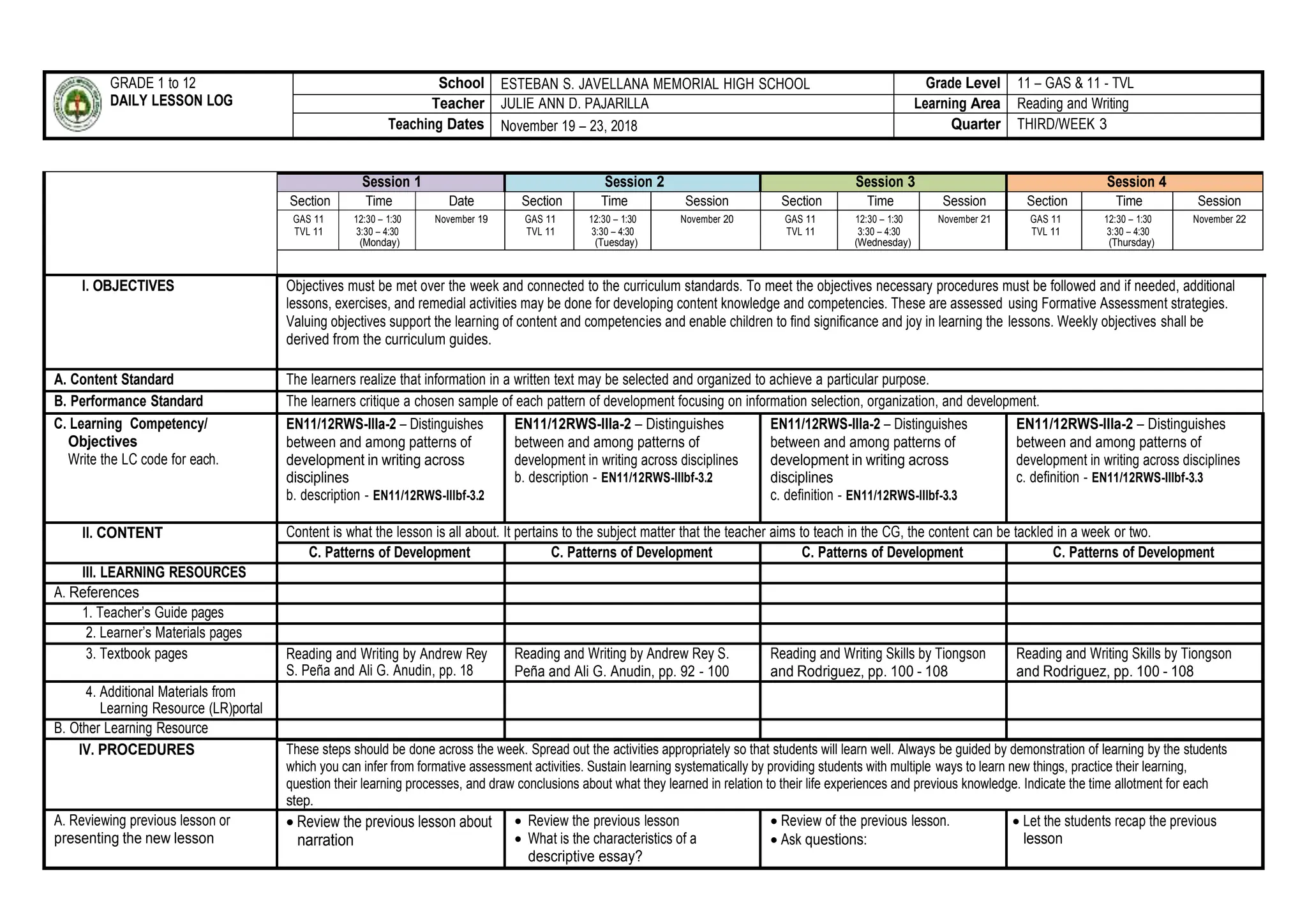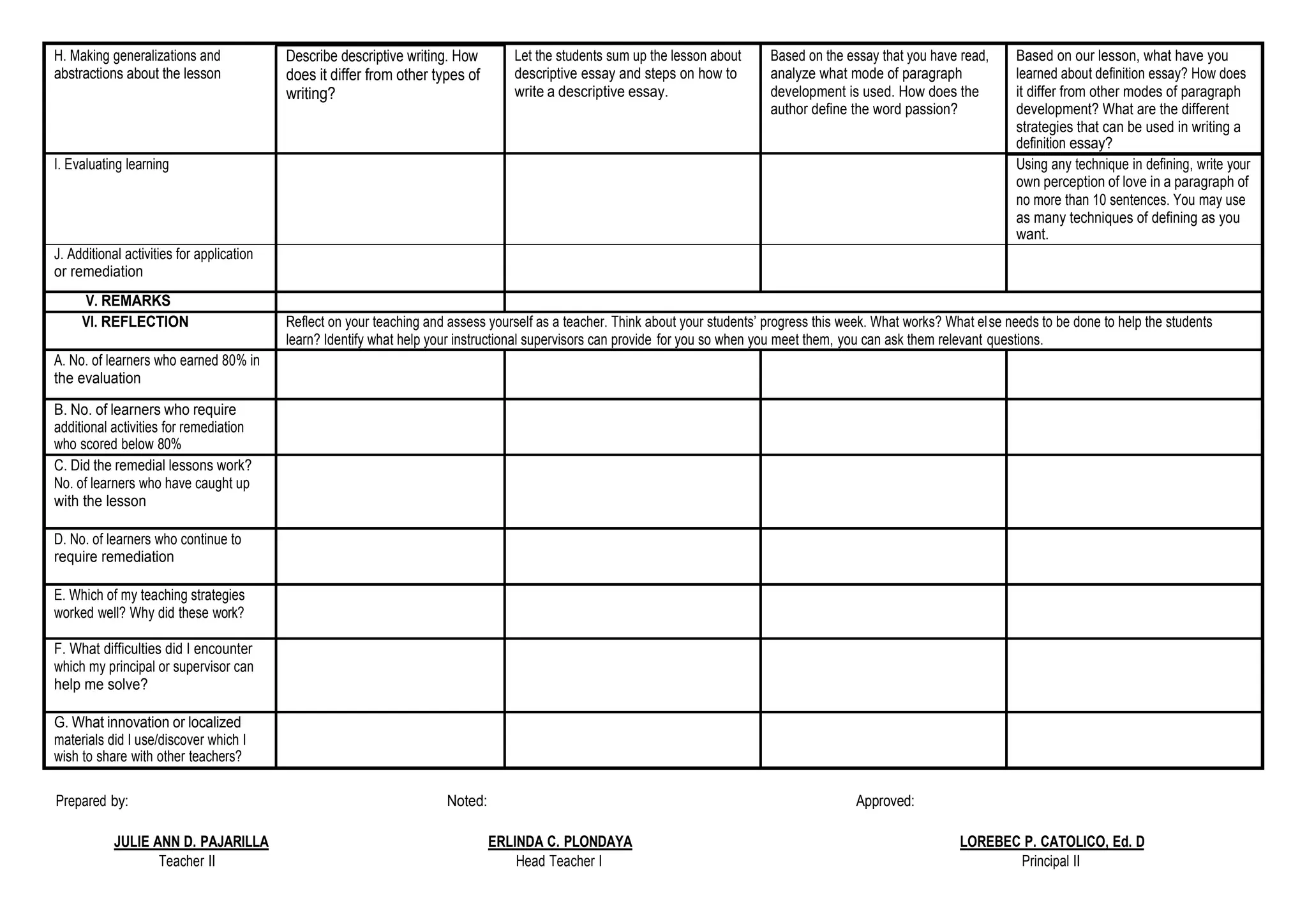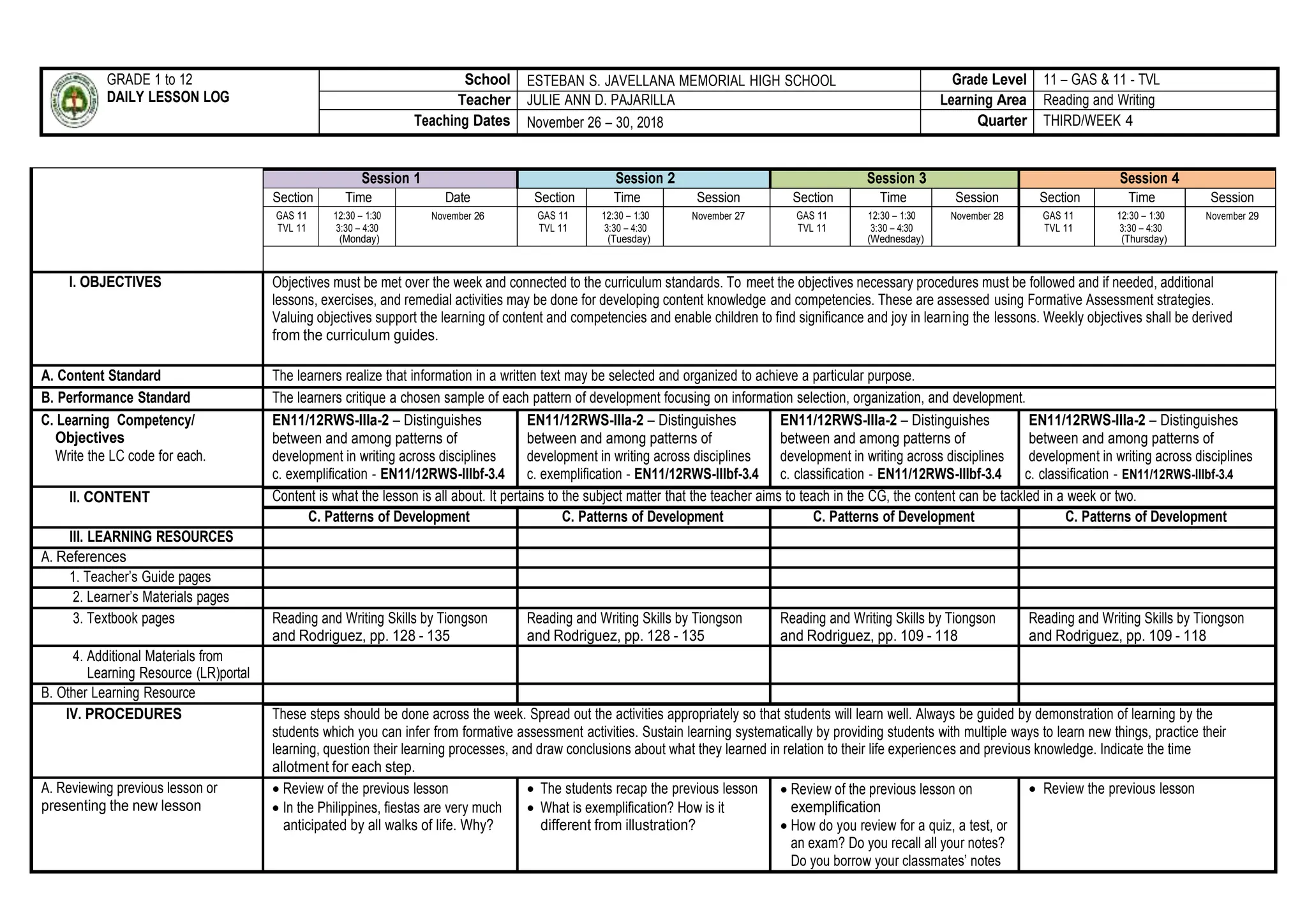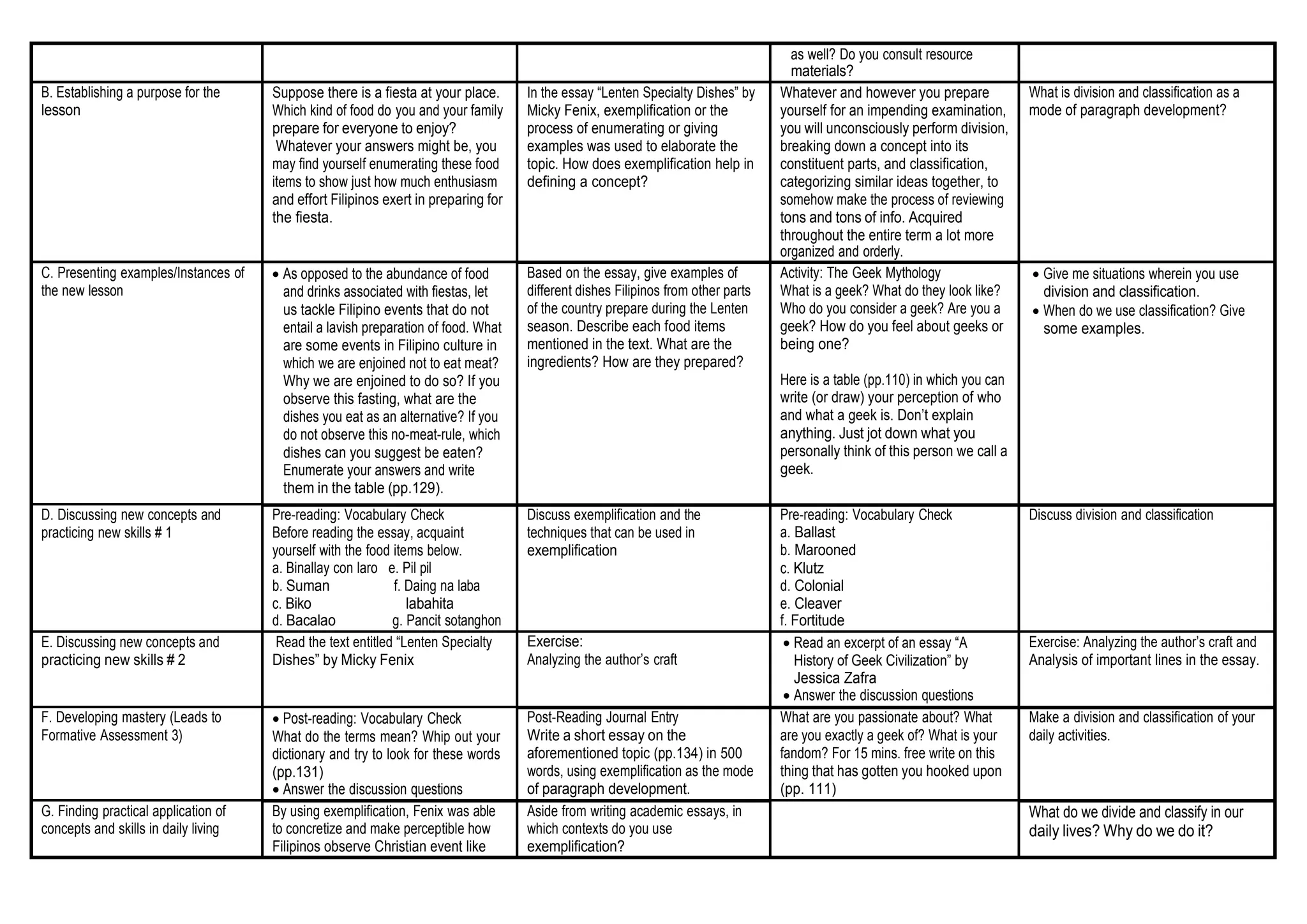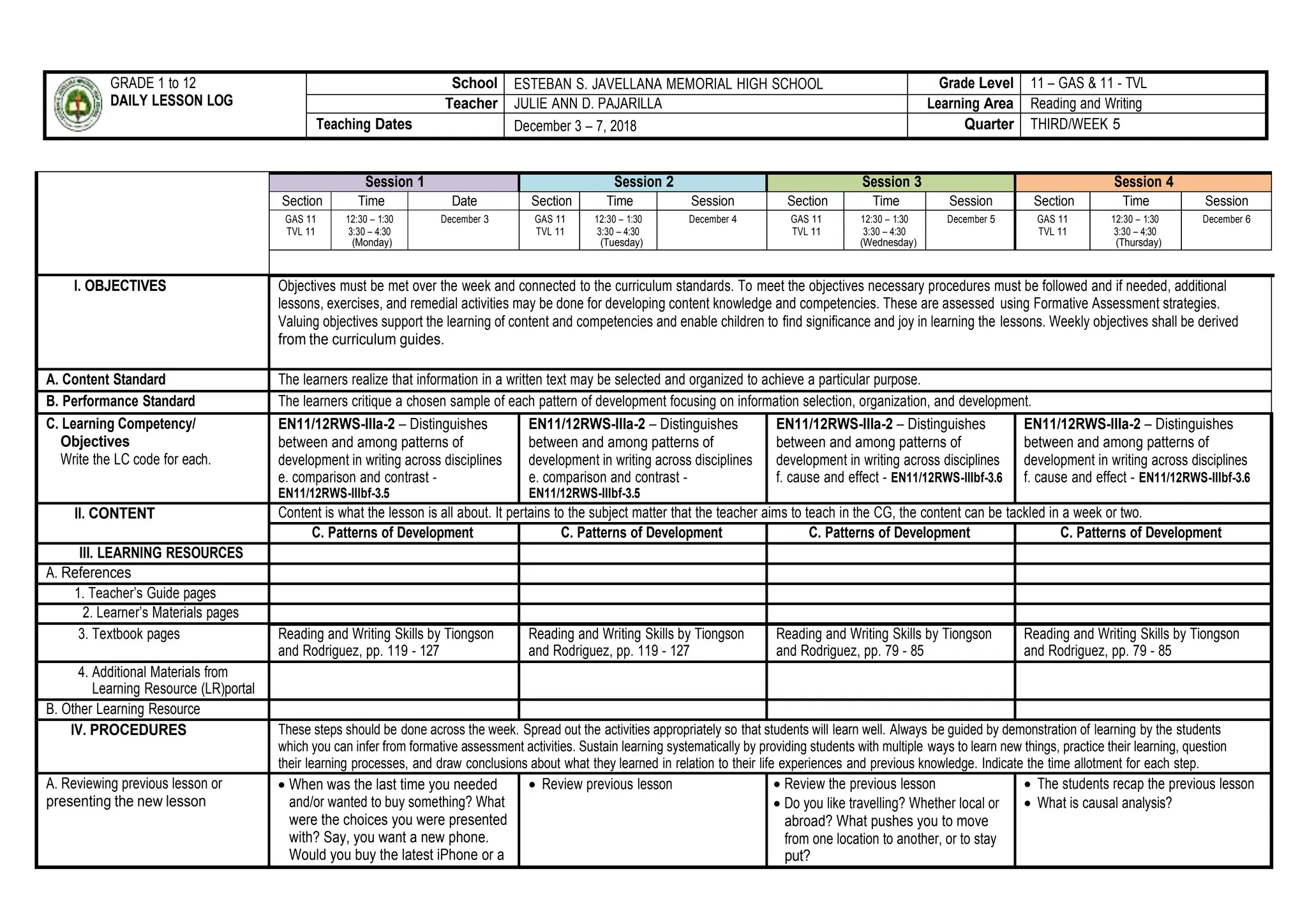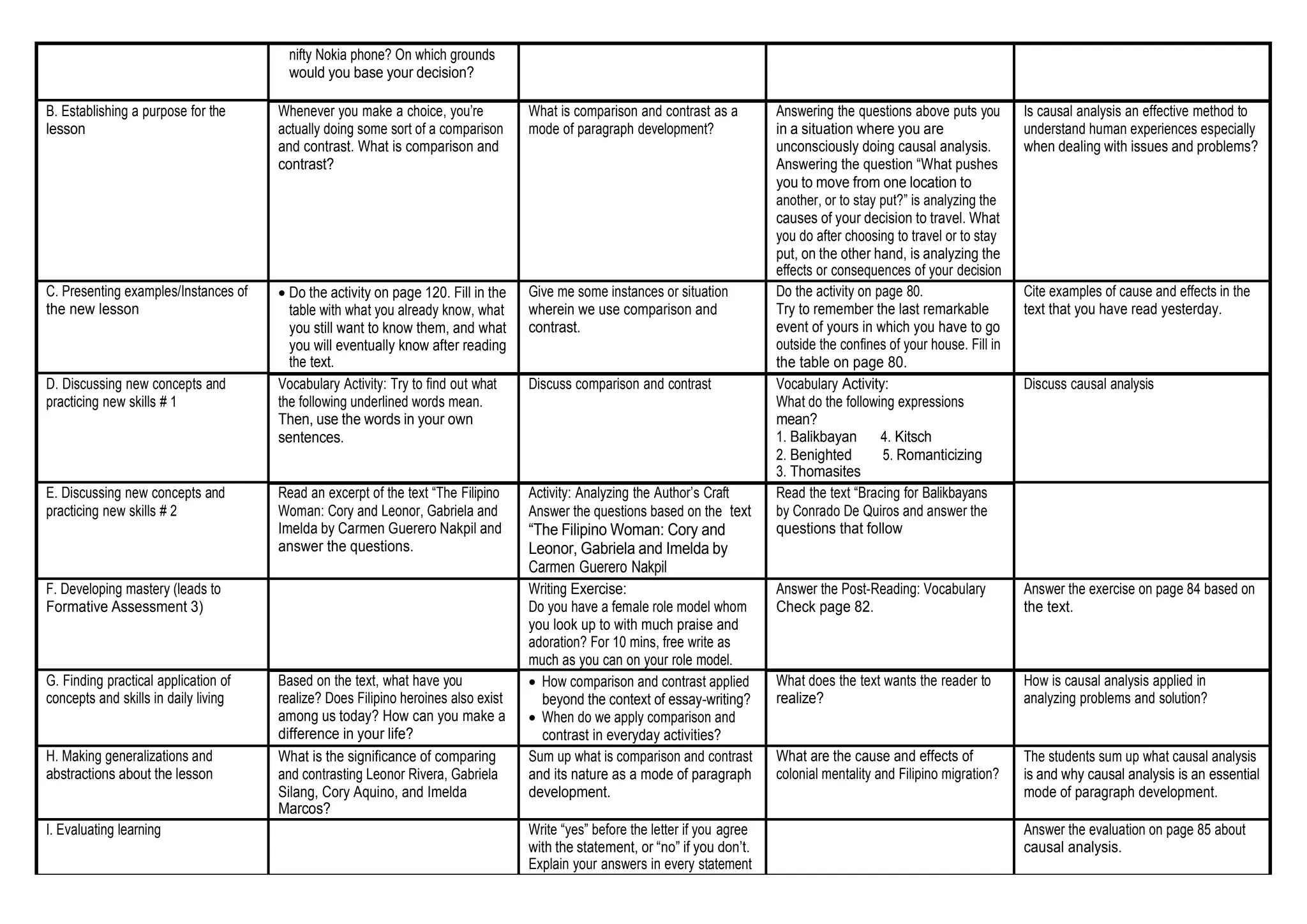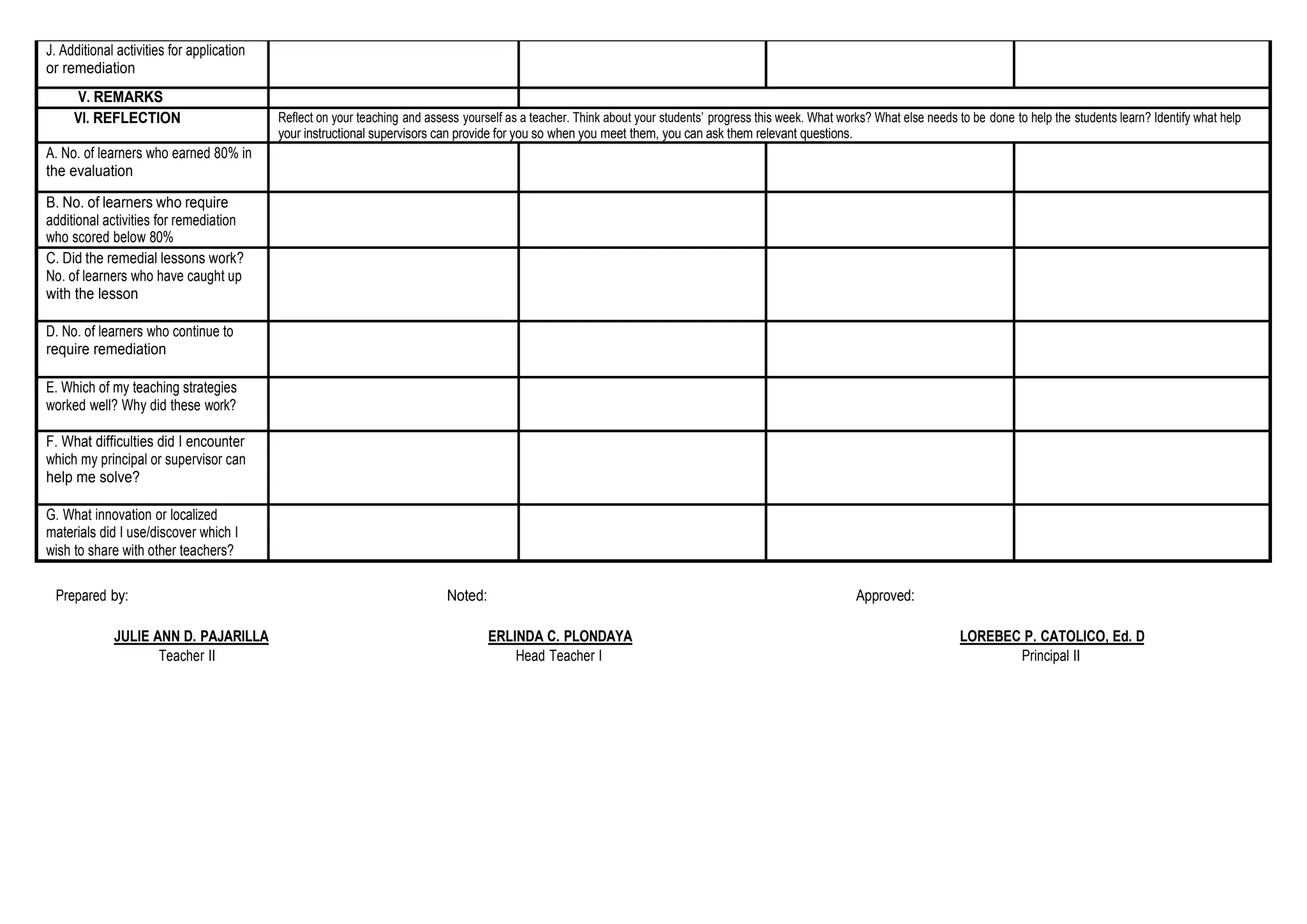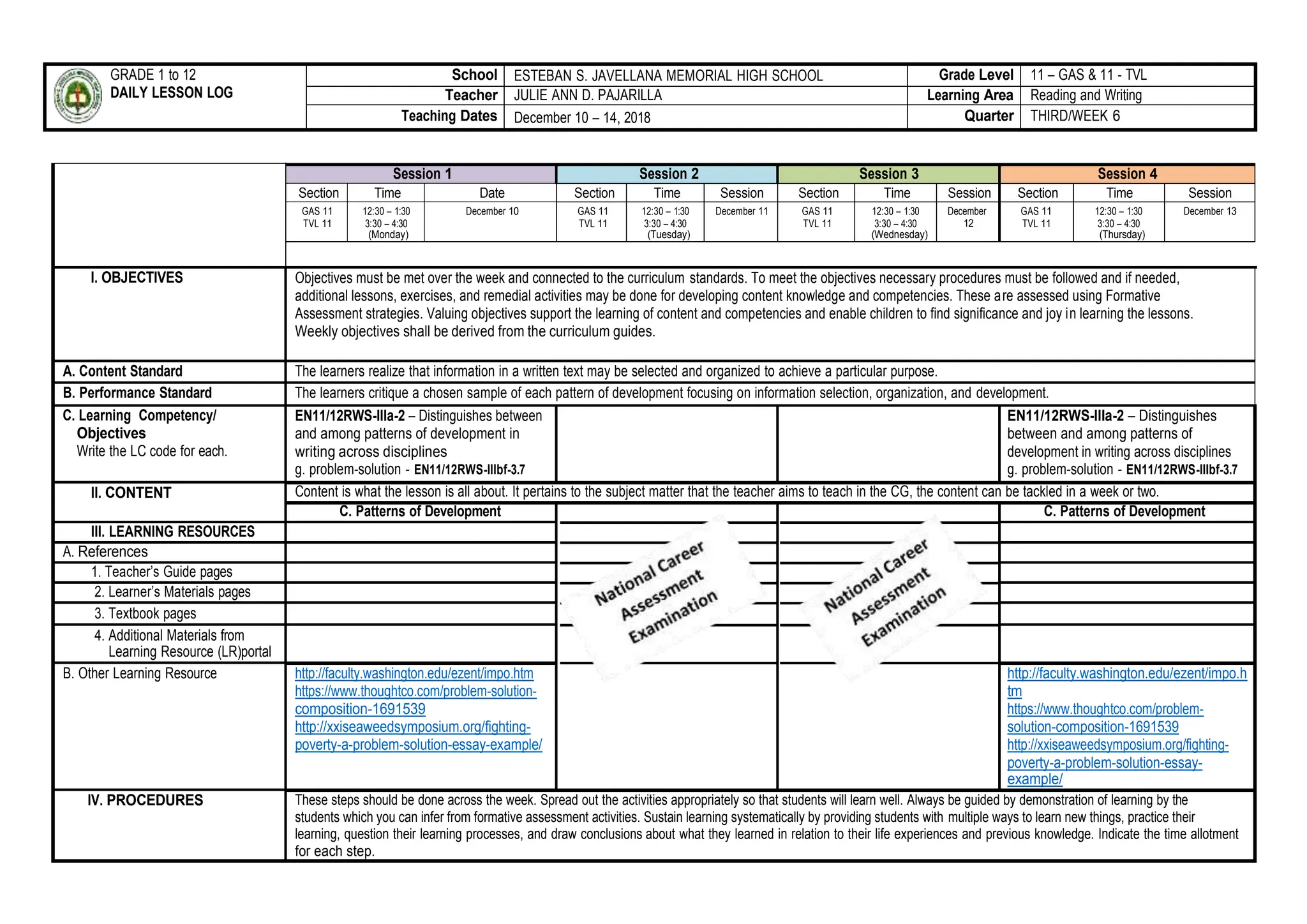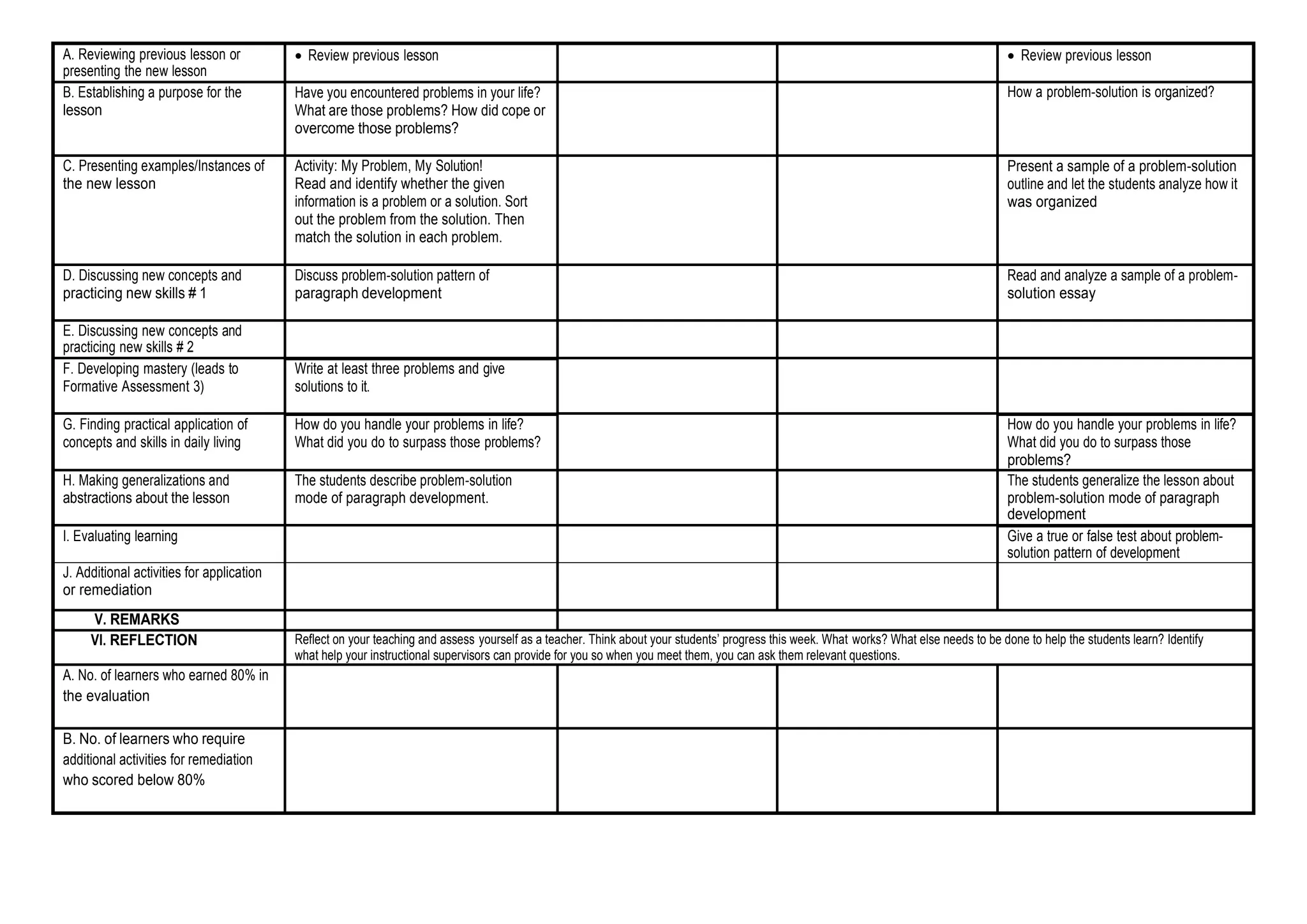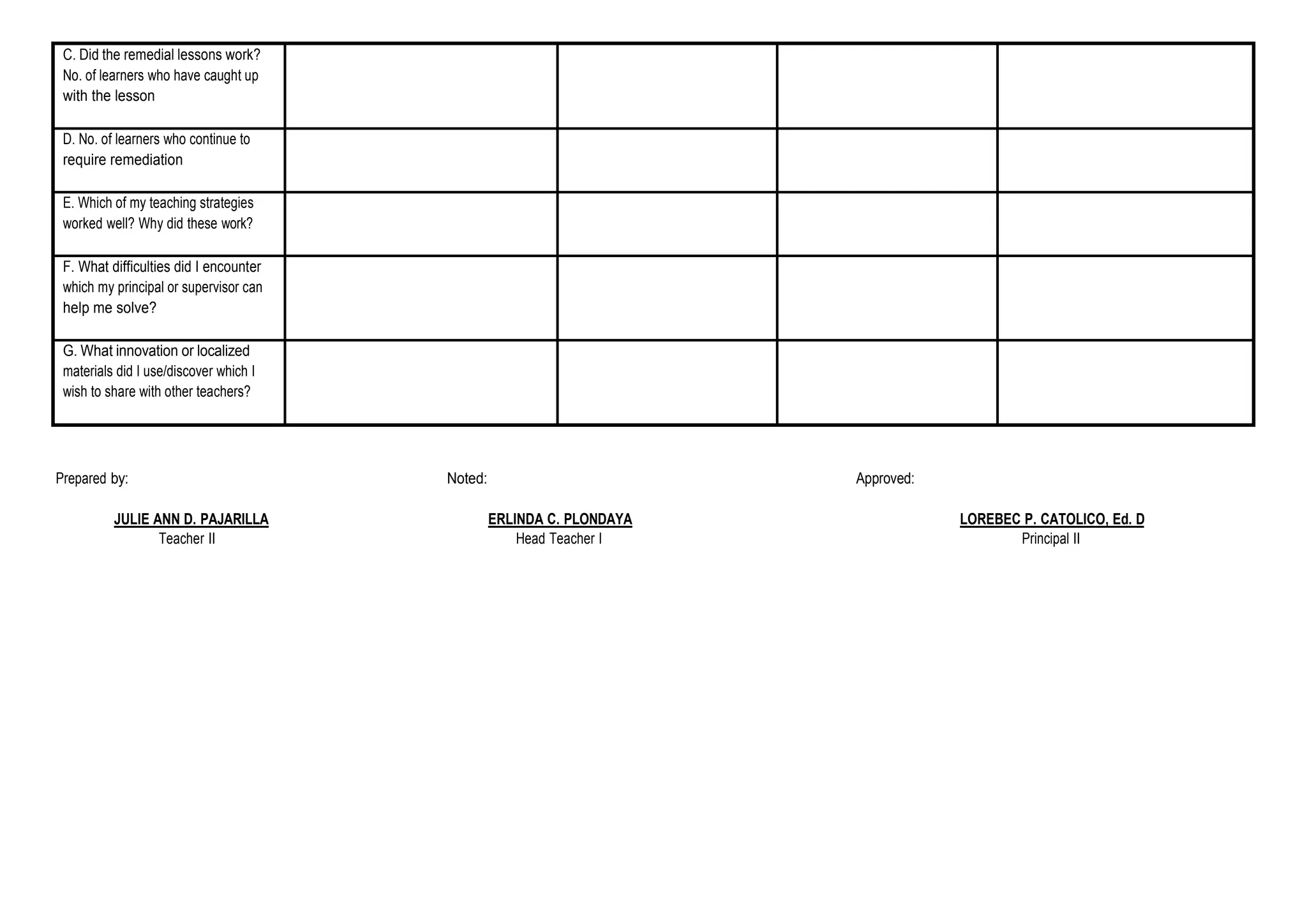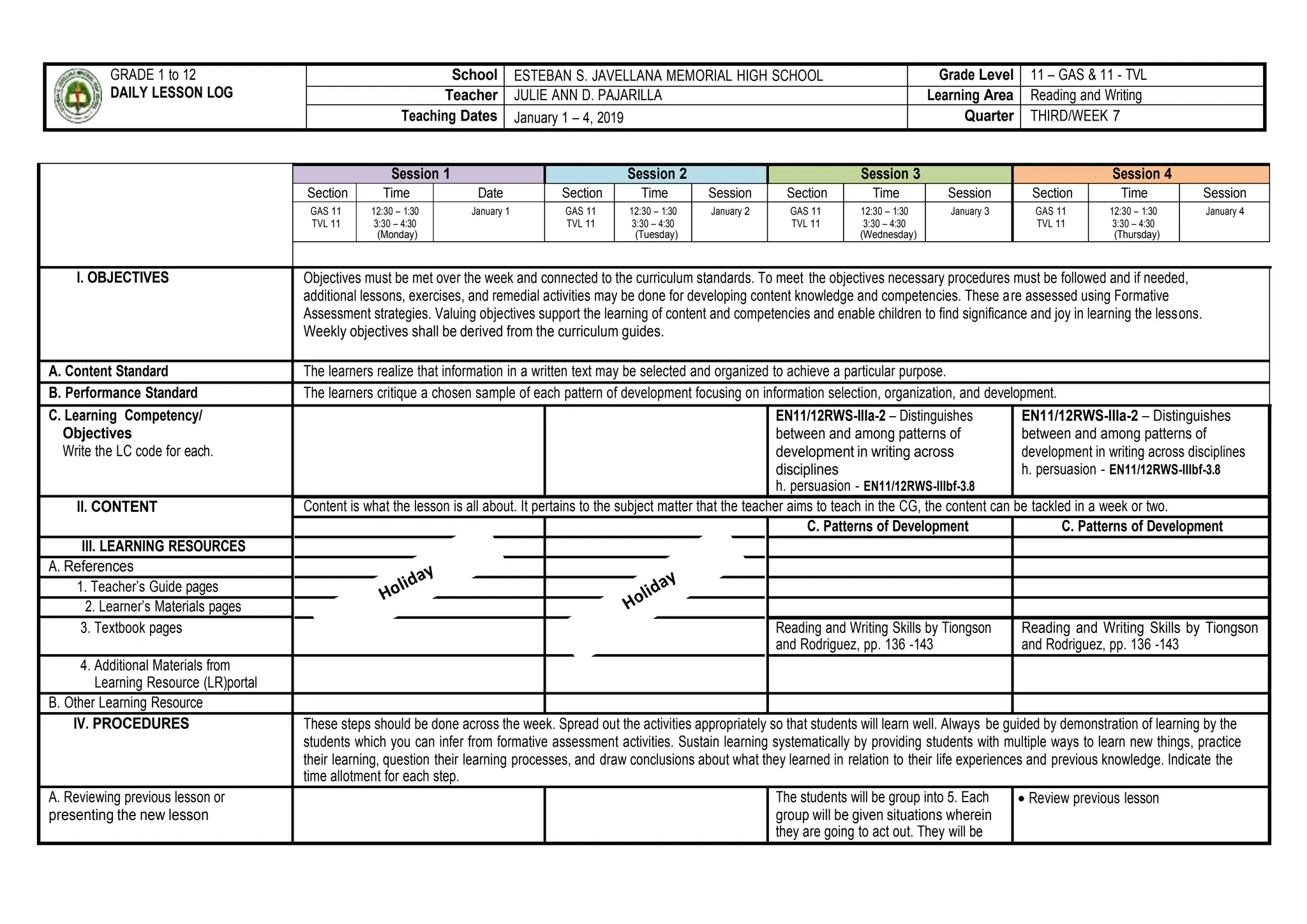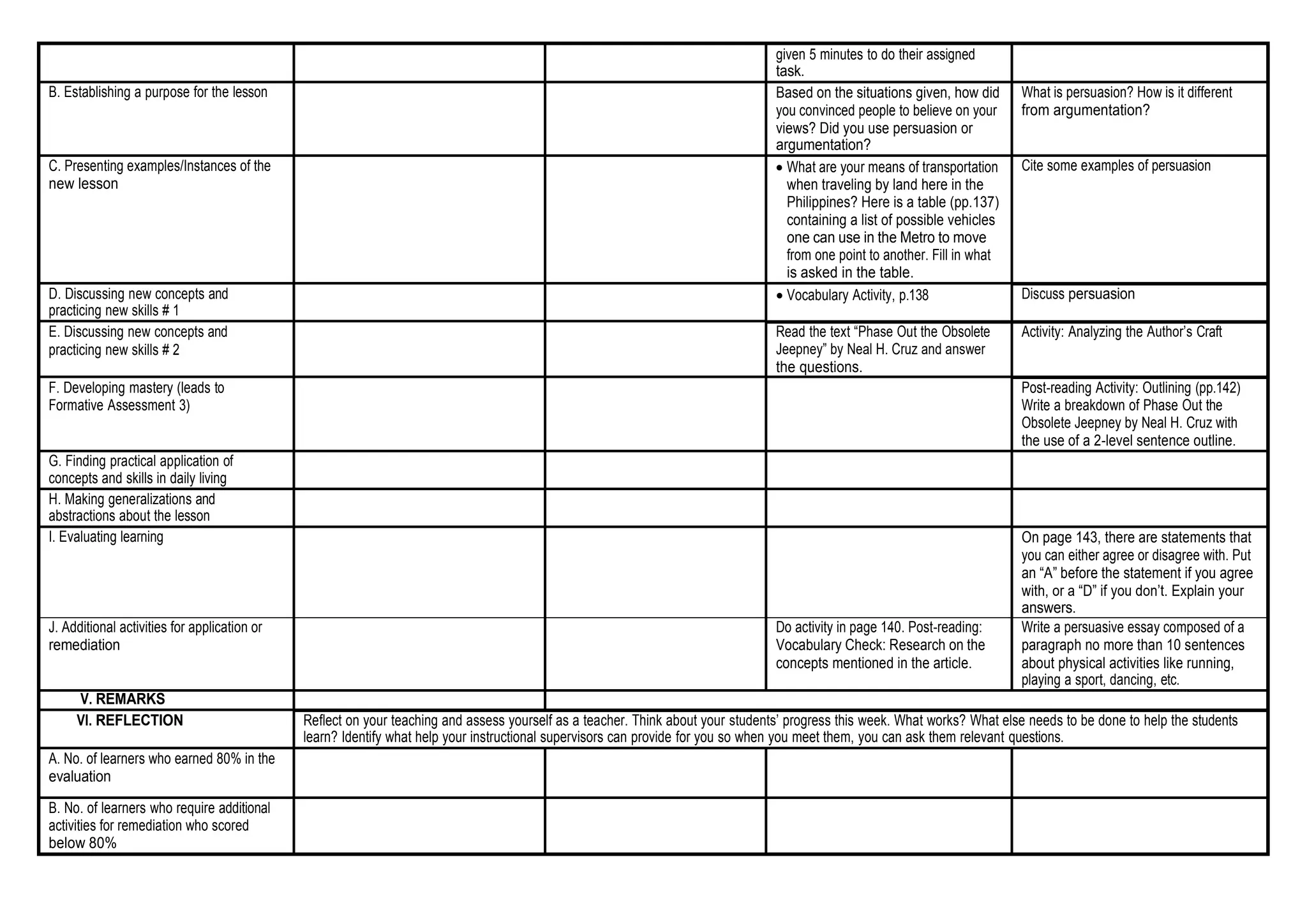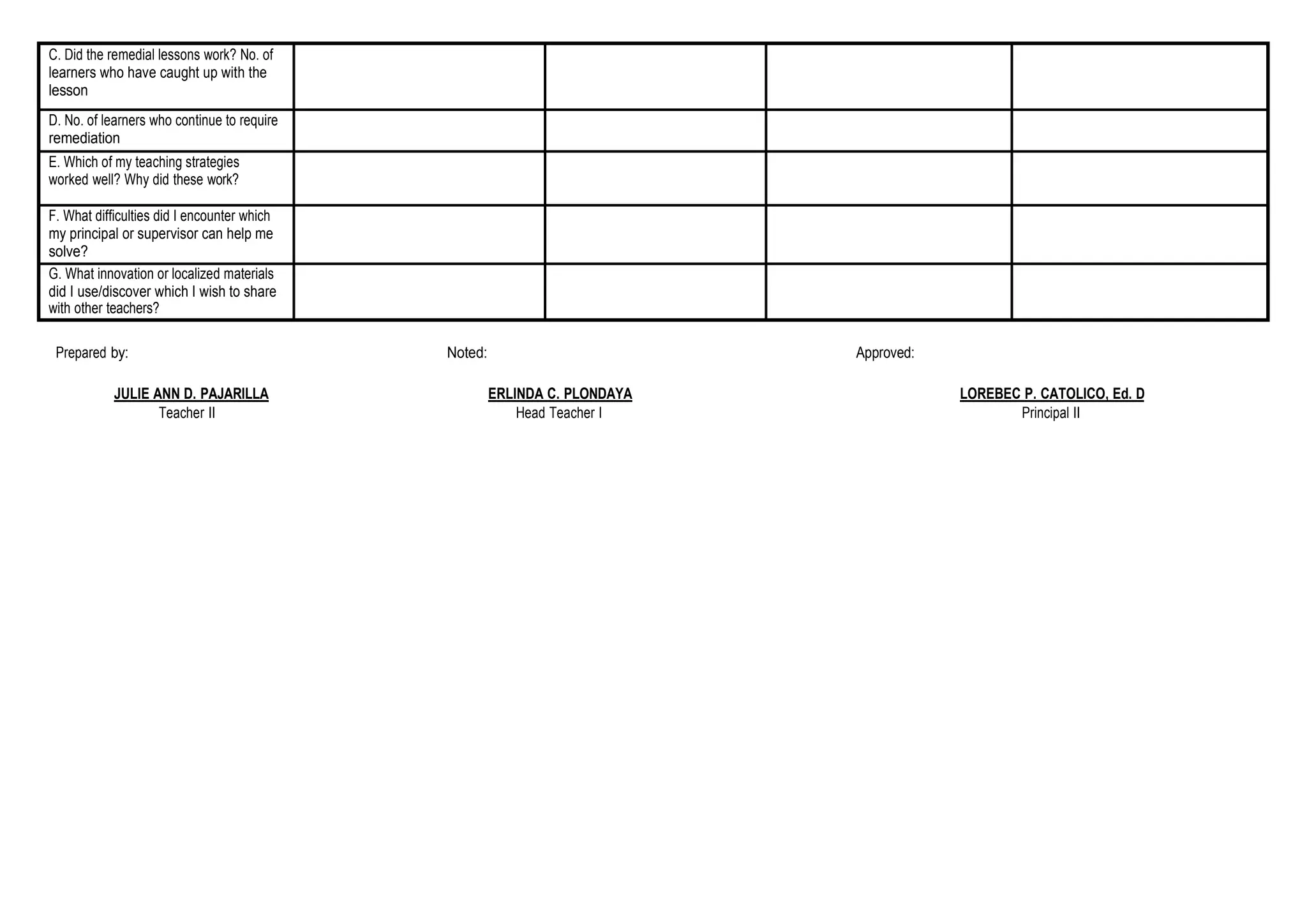This document is a daily lesson log for a teacher, Julie Ann D. Pajarilla, covering lessons from October 29 to November 9, 2018. The lessons focus on techniques for selecting and organizing information for 11th grade students. Key points covered include:
- Objectives relating to describing written texts, distinguishing techniques for selecting and organizing information like brainstorming lists and graphic organizers.
- Content on reading and thinking strategies, text as connected discourse, and techniques for selecting and organizing information.
- Learning resources include textbooks and online sources.
- Procedures over the weeks include reviewing previous lessons, presenting new concepts like outlines, discussing skills, and formative assessments.
- Reflection
